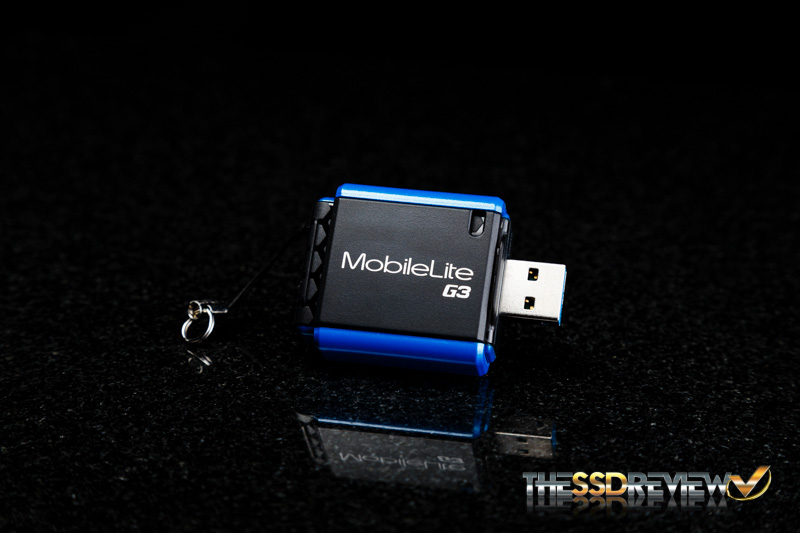FLASH MEDIA TEST PROTOCOL
In order to test the rated speeds of the card we choose to use a few popular synthetic benchmarks which include ATTO, CrystalDiskMark, and Anvil Storage Utilities Professional. Not only are we going to use these benchmarks, we are going to run a comparison against other cards I have in my bag and test in a real world use scenario. This should give us enough to confirm the rated specs and give us a more in-depth view on how it performs.
To connect the SDXC card to our computer we have the Kingston MobileLite G3 USB 3.0 card reader. It is a compact and simple plug-and-play card reader that allows for USB 3.0 transfer speeds for any SD / SDHC / SDXC and microSD / SDHC / SDXC cards. It is a pretty good buy especially at only around $10 and will allow us to test the Kingston Ultimate at up to its max rated speeds.
ATTO DISK BENCHMARK VER. 2.47
ATTO Disk Benchmark is a relatively easy-to-use benchmark tool. ATTO Disk Benchmark relies on testing different file sizes with highly compressible data. Although this is not the best representation of media files which are, for the most part, highly incompressible, it is a good start and is still the main mechanism most manufacturers use to determine their product specifications. In our testing, we have left the benchmark settings to default.
As we can see from the results above, ATTO reports max read speed of 91MB/s. And for write speed we see 63MB/s, exceeding the rated 60MB/s on the packaging.
CRYSTALDISKMARK BENCHMARK VER. 3.0.3
Crystal Disk Mark is visually straightforward and is used for measuring the speeds at which your storage device reads and writes with random, mostly incompressible, data. Random data is more consistent with everyday use of a computer, such as transferring videos, pictures and music. Thus, this benchmark will be a better representation of speeds to expect on a video or stills camera over ATTO.
Crystal Disk Mark testing with its random data shows us the same speeds reported by ATTO. 91MB/s read and 63MB/s write.
ANVIL’S STORAGE UTILITIES PROFESSIONAL 1.1.0
Anvil’s Storage Utilities is the best software program available for benchmarking flash media. Not only does it give an accurate look at transfer speeds and throughput, but also, it goes even further by identifying file sizes, disk access times, as well as system and device identification. It even has many extra features such as endurance torture testing and a TRIM button feature to manually trigger TRIM on supported devices.
However, now with Anvil, we are only seeing 87MB/s read and 53MB/s write, an 11MB/s drop in write speeds and around 4MB/s drop in read speeds. While that is disappointing, it is still well above the 30MB/s sustained write speeds it needs to meet for the USH-I U3 rating. Now, let’s move on to the real world testing and final thoughts.
 The SSD Review The Worlds Dedicated SSD Education and Review Resource |
The SSD Review The Worlds Dedicated SSD Education and Review Resource | 


Also, on the back is a small chart listing the approximate amount of media it can hold, from 11400 24MP images to 160 hours of 4K video. And a QR code and link to ADATA’s website where you can register for your lifetime warranty and free software. https://merky.de/805fcc
You should have tested the card with Q1, not Q4. Nobody will copy 4 files at once. It is not a server 🙂
You do realize this is a 2014 article don’t ya? Testing was conducted to validate specs.